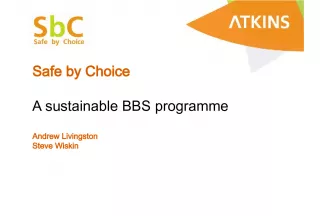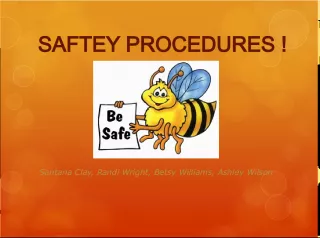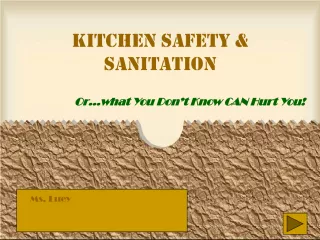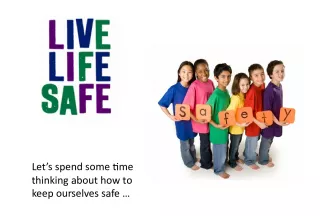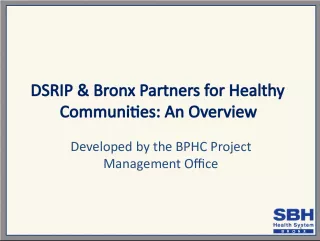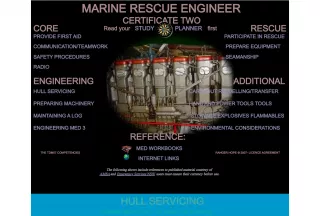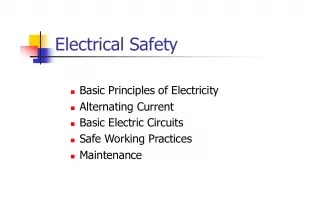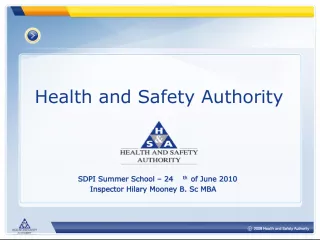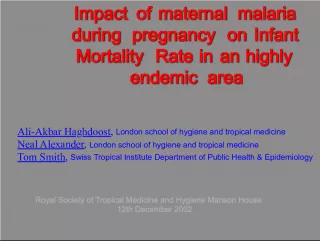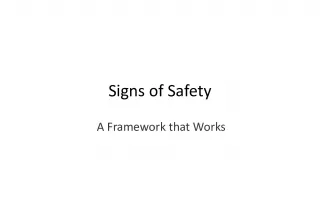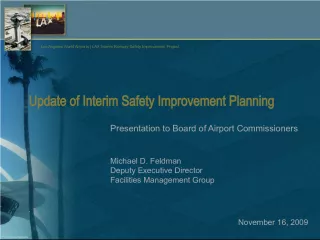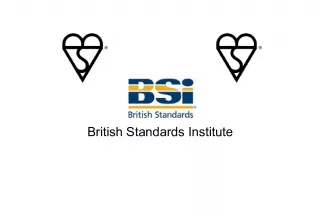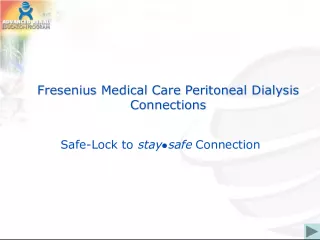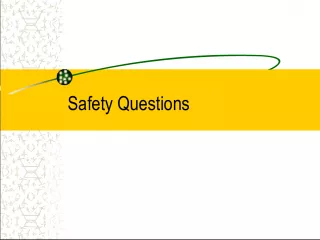Pregnancy and Childbirth Safety: Preparing for a Safe Delivery
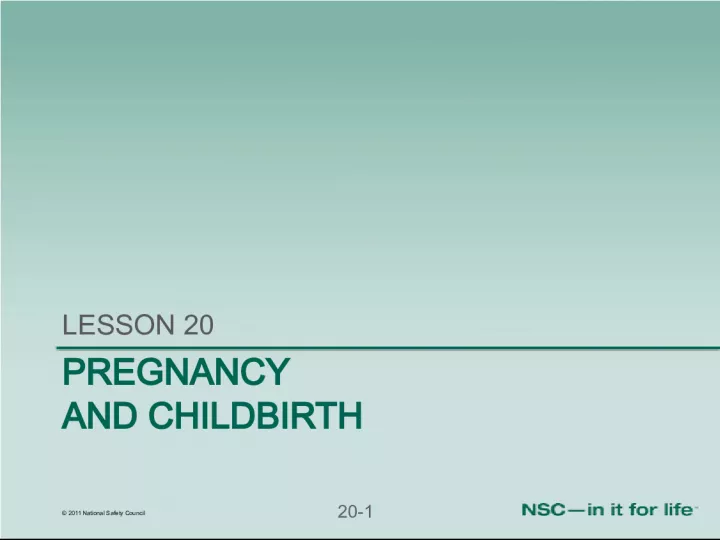

Learn about safe delivery for both mother and child during pregnancy and childbirth. This lesson covers the basics of pregnancy and labor, possible complications, and emergency situations.
- Uploaded on | 0 Views
-
 fabienleroy
fabienleroy
About Pregnancy and Childbirth Safety: Preparing for a Safe Delivery
PowerPoint presentation about 'Pregnancy and Childbirth Safety: Preparing for a Safe Delivery'. This presentation describes the topic on Learn about safe delivery for both mother and child during pregnancy and childbirth. This lesson covers the basics of pregnancy and labor, possible complications, and emergency situations.. The key topics included in this slideshow are Pregnancy, childbirth, safe delivery, complications, emergency situations,. Download this presentation absolutely free.
Presentation Transcript
1. 2011 National Safety Council 20-1 PREGNANCY AND CHILDBIRTH LESSON 20
2. 2011 National Safety Council 20-2 Introduction Childbirth sometimes occurs outside planned setting Delivery rarely becomes medical emergency Medical problems or complications can become emergencies
3. 2011 National Safety Council 20-3 Pregnancy and Labor Begins with fertilization of ovum Growth and development proceed over 40 weeks
4. 2011 National Safety Council 20-4 Stages of Pregnancy Divided into 3 trimesters 3 months each Single cell divides into many First 8 weeks is an embryo; then a fetus Embryo attached to placenta Fetus develops inside amniotic sac All major organ systems developed by week 8
5. 2011 National Safety Council 20-5 Stages of Pregnancy (continued) Fetus fully formed by week 36 Near end of pregnancy, head of fetus positioned downward in pelvis Fetus passes through dilated cervix and vagina
6. 2011 National Safety Council 20-6 Stages of Labor and Delivery Show or bloody show may occur before labor begins - When mucus plug from cervix released - Can occur up to 10 days before contractions begin Labor and delivery occurs in 3 stages beginning with contractions
7. 2011 National Safety Council 20-7 Stage 1: Labor to Cervical Dilation Amniotic sac ruptures before or during first stage Uterine contractions begin and eventually push infants head into cervix - 10-15 minutes apart initially - 2-3 minutes apart shortly before birth May last few hours to a day
8. 2011 National Safety Council 20-8 Stage 2: Delivery Typically lasts 1-2 hours Cervix fully dilated Contractions powerful and painful Infants head presses on floor of pelvis woman has urge to push down Vagina stretches open Head emerges (crowning) Rest of body pushed out
9. 2011 National Safety Council 20-9 Stage 3: Childbirth to Placenta Delivery Placenta separates from uterus and delivered usually within 30 minutes of birth Uterus contracts and seals off blood vessels
10. 2011 National Safety Council 20-10 Emergency Care During Pregnancy Women who receive regular care are advised about potential problems to watch for Although rare, problems may require emergency care
11. 2011 National Safety Council 20-11 Vaginal Bleeding
12. 2011 National Safety Council 20-12 Vaginal Bleeding Light irregular discharges of a small amount of blood (spotting) may be normal Vaginal bleeding during pregnancy is abnormal May be caused by cervical growths or erosion, problem with placenta or miscarriage In third trimester may be sign of preterm birth See health care provider immediately
13. 2011 National Safety Council 20-13 Assessing Vaginal Bleeding Perform standard assessment Assess for pain and any signs of shock Take repeated vital signs The history should include an obstetric history
14. 2011 National Safety Council 20-14 Emergency Care for Vaginal Bleeding Perform standard patient care Have female assistant present if possible Position patient lying on left side Dont control bleeding by keeping patients legs together Give patient towel or sanitary napkins
15. 2011 National Safety Council 20-15 Emergency Care for Vaginal Bleeding (continued) Dont try to pack vagina Save expelled material to give to arriving EMS Follow local protocol re: oxygen administration Treat for shock Provide emotional support
16. 2011 National Safety Council 20-16 Miscarriage
17. 2011 National Safety Council 20-17 Miscarriage Loss of embryo or fetus in first 14 weeks 10 % 25% of pregnancies end in a miscarriage May result from: - Genetic disorder - Fetal abnormality - Factor related to womans health - No known cause Most women dont have problems with later pregnancies
18. 2011 National Safety Council 20-18 Assessing Miscarriage Perform standard assessment Take repeated vital signs
19. 2011 National Safety Council 20-19 Signs and Symptoms of Miscarriage Vaginal bleeding Abdominal pain or cramping
20. 2011 National Safety Council 20-20 Emergency Care for Miscarriage Provide same emergency care as vaginal bleeding in pregnancy Retain expelled materials for EMS personnel Be calm and reassuring
21. 2011 National Safety Council 20-21 Trauma in Pregnancy
22. 2011 National Safety Council 20-22 Trauma in Pregnancy Womans blood volume increases significantly in pregnancy Blood loss may not immediately cause signs of shock Blood flow reduced to fetus Signs of internal blood loss may not be apparent
23. 2011 National Safety Council 20-23 Emergency Care for Trauma in Pregnancy Perform standard patient care Assume there may be internal bleeding Treat for shock Follow local protocol for oxygen administration Dont let patient late in pregnancy lie flat on her back Raise right side higher to reduce pressure on vena cava
24. 2011 National Safety Council 20-24 Other Problems
25. 2011 National Safety Council 20-25 Other Problems in Pregnancy See health care provider if you have: Abdominal pain Persistent or severe headache (sign of toxemia) Sudden leaking of water Persistent vomiting, chills and fever, convulsions, difficulty breathing Persistently elevated blood pressure Signs or symptoms related to diabetes
26. 2011 National Safety Council 20-26 Childbirth
27. 2011 National Safety Council 20-27 Childbirth Remember it is a natural process Woman may be fearful or distressed Remain calm
28. 2011 National Safety Council 20-28 Supportive Care During Labor Ensure plan for transport Help woman rest Provide comfort measures Do not let woman have bath Write down contraction intervals and length Remind woman to control breathing Continue to provide reassurance
29. 2011 National Safety Council 20-29 Assessing Whether Delivery Is Imminent Labor usually lasts for several hours In rare occasions, labor progresses quickly May begin weeks before due date Prepare to assist in childbirth if delivery may be imminent Braxton Hicks contractions do not signal beginning of labor, but do not assume woman is not in labor when she feels contractions
30. 2011 National Safety Council 20-30 Gather Information from the Woman Name, age and due date Physicians name and telephone number Ask if she: - Has given birth before - Knows whether she may be having twins - Has broken her water and to describe it - Has experienced any bleeding - Has any past or present medical problems Give this information to arriving EMS personnel
31. 2011 National Safety Council 20-31 Assessing Childbirth Imminence Has the bloody show occurred? When did contractions begin? How close together are they? How long does each last? - When contractions are about 2 minutes apart, delivery will likely occur very soon Feels strong urge to push? Check whether infants head is crowning
32. 2011 National Safety Council 20-32 Preparing for Delivery Someone must stay with woman Gather the items needed or helpful for delivery Many EMRs carry obstetrics kit
33. 2011 National Safety Council 20-33 Items Needed for Delivery Clean blanket or coverlet Several pillows Plastic sheet or stack of newspapers (to cover bed surface) Clean towels and washcloths Sanitary napkins or pads of clean cloth Medical examination gloves Basin and plastic bags (for afterbirth) Medical hazard bag or designated plastic bag (for clean-up)
34. 2011 National Safety Council 20-34 Items Needed for Delivery (continued) Bowl of hot water (for washing but not the infant) Empty bowl (in case of vomiting) Clean handkerchief (to wear as facemask) Clean, soft towel, sheet or blanket (to wrap newborn) Eye and face protection for yourself, if available Oxygen if available Bulb syringe (to suction infants mouth)
35. 2011 National Safety Council 20-35 Items Needed for Delivery (continued) If help may be delayed: Clean strong string, shoelaces or cloth strips (to tie cord) Sharp scissors, knife or razor (to cut cord) - Sterilize first in boiling water for 5 minutes - Or sterilize by holding over flame for 30 seconds
36. 2011 National Safety Council 20-36 Preparation for Childbirth Provide privacy for the mother Prepare birthing bed Roll up sleeves, wash hands thoroughly for 5 minutes, put on medical examination gloves Protect your eyes, mouth and nose from blood and other fluids
37. 2011 National Safety Council 20-37 Preparation for Childbirth (continued) Do not let woman use bathroom Do not touch vaginal areas except during delivery Call dispatch or health care provider for additional instructions Do not make an internal vaginal examination When crowning occurs, move woman into birthing position Assist with delivery
38. 2011 National Safety Council 20-38 Skill: Assisting with Delivery
39. 2011 National Safety Council 20-39 1. Help woman lie on back with knees bent and apart and feet flat
40. 2011 National Safety Council 20-40 2. As infants head appears, have gloved hands ready to receive and support the head
41. 2011 National Safety Council 20-41 3. As the head emerges (usually face down), support the head 4. After the head is out, have the woman stop pushing and breathe in a panting manner
42. 2011 National Safety Council 20-42 5. Hold infant with head lower than feet 6. Suction nose and mouth with bulb syringe
43. 2011 National Safety Council 20-43 7. Gently dry and wrap the infant in a towel or blanket to prevent heat loss, keeping the cord loose 8. Follow your local protocol to clamp or tie the umbilical cord or leave it intact for arriving EMS personnel
44. 2011 National Safety Council 20-44 9. Wait for delivery of afterbirth, placenta and umbilical cord do not pull on umbilical cord in an attempt to pull out placenta 10. Continue to monitor both mother and newborn
45. 2011 National Safety Council 20-45 Care of the Mother After Delivery 1. Support and comfort mother 2. Monitor pulse and breathing 3. Replace any blood- soaked sheets or blankets, dispose of used supplies 4. Mother may drink water now
46. 2011 National Safety Council 20-46 Bleeding After Delivery Some bleeding normally occurs with childbirth and delivery of placenta Usually stops after placenta is delivered Use sanitary pads or clean folded cloths to absorb blood
47. 2011 National Safety Council 20-47 Care for Bleeding After Delivery To help stop bleeding, massage abdomen below navel with a continuous circular motion Be sure you are kneading with your palms Keep mother still and try to calm her Treat for shock Follow local protocol for oxygen administration Encourage breastfeeding
48. 2011 National Safety Council 20-48 Care for the Newborn
49. 2011 National Safety Council 20-49 Assess the Newborn Note skin color, movement and whether crying is strong or weak Normal respiratory rate is more than 40 breaths/minute The normal pulse is more than 100 beats/minute Note any changes over time Provide this information EMS personnel
50. 2011 National Safety Council 20-50 Care of the Newborn (continued) Dry newborn Ensure infant stays wrapped, including the head, to stay warm Support newborns head if it must be moved for any reason Continue to check breathing and airway
51. 2011 National Safety Council 20-51 APGAR Score for Newborn Assessment Newborn quickly assessed and given a score of 0-2 in each area: A Appearance P Pulse G Grimace (flick soles, observe face) A Activity R Respiratory Effort Scoring: 710 Provide routine care 46 Provide oxygen and stimulation 03 Provide oxygen and CPR
52. 2011 National Safety Council 20-52 Premature Infants Premature infant at greater risk for complications It is crucial to keep a small newborn warm Resuscitation is more likely to be needed
53. 2011 National Safety Council 20-53 Non-Breathing Newborn If newborn is not crying, gently flick bottom of feet or gently rub its back If it is still not crying, check for breathing
54. 2011 National Safety Council 20-54 Non-Breathing Newborn (continued) If infant is not breathing: - Provide 2 gentle ventilations mouth-to-mask or with BVM - Assess breathing and pulse If breathing is absent, slow or very shallow: - Provide ventilations at rate of 40-60 breaths/minute - Follow local protocol for oxygen administration
55. 2011 National Safety Council 20-55 Non-Breathing Newborn (continued) If infant is not breathing - If pulse is 60-100 beats/minute, continue ventilations - If pulse is <60 beats/minute, start chest compressions at rate of 120/minute Use thumb-encircling method with second responder Ratio of 3 compressions to 1 breath
56. 2011 National Safety Council 20-56 Reassess breathing and pulse after 30 seconds If pulse is >100 and respiration has improved, gradually discontinue ventilations Non-Breathing Newborn (continued)
57. 2011 National Safety Council 20-57 Childbirth Problems Most deliveries occur without problems Common problems involve presentation of infant or maternal bleeding
58. 2011 National Safety Council 20-58 Meconium Staining Infant may defecate before or during childbirth, staining amniotic fluid brown or green with meconium Newborn may inhale fluid with first breath, causing lung infection If mother describes amniotic fluid as having color or if you observe this, tell arriving EMS personnel
59. 2011 National Safety Council 20-59 Breech Birth Buttocks or feet appear in birth canal Umbilical cord is squeezed and blood flow is compromised If infants head becomes lodged in birth canal and it tries to breathe, it may suffocate
60. 2011 National Safety Council 20-60 Breech Birth (continued) Tell woman not to push, and calm and reassure her Support body as it emerges, do not try to pull head out If head does not emerge soon, create breathing space for infant Check infant immediately and give CPR if needed
61. 2011 National Safety Council 20-61 Limb Presentation Rarely, arm or leg may emerge first Emergency requiring immediate medical assistance Tell the woman not to push, calm and reassure her Update responding EMTs
62. 2011 National Safety Council 20-62 Limb Presentation (continued) Put woman in knee-chest position Do not try to pull infant out or push arm or leg back in
63. 2011 National Safety Council 20-63 Prolapsed Cord Segment of cord protrudes through birth canal before childbirth Cord will be compressed as infant moves through canal, cutting off blood flow
64. 2011 National Safety Council 20-64 Emergency Care for Prolapsed Cord Follow local protocol to position woman either in the knee-chest position or lying on the left side Place dressings soaked in sterile or clean water on cord Follow local protocol for oxygen administration Dont push cord back inside mother If medical personnel have not arrived when infant presents or begins to emerge, follow local protocol
65. 2011 National Safety Council 20-65 Emergency Care for Prolapsed Cord (continued) Carefully insert sterile gloved hand into birth canal and gently push presenting part away from cord while allowing birth to continue If not possible, open a breathing space with your fingers as for breech presentation Check infant immediately and be prepared to give CPR
66. 2011 National Safety Council 20-66 Cord Around Neck Umbilical cord may be around neck when infant emerges Slip it over head or shoulder If it is too tight and you cannot release infants head, it is a life-threatening emergency Tie off cord in 2 places and cut cord between the 2, then unwrap it
67. 2011 National Safety Council 20-67 Care for Premature Infant Keep premature newborn warm Provide ventilations or CPR if needed Follow local protocol for blow-by oxygen
68. 2011 National Safety Council 20-68 Stillborn Infant Rarely, infant is born dead or dies shortly after birth Use all resuscitation measures available Provide comfort for mother
